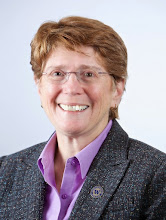In the spring of 2006, New York Law School's Center for Professional Values and Practice hosted a symposium on The Plaintiffs' Bar.
It's obviously much too late to go to the symposium, but some of the papers were published in the New York Law School Law Review (Volume 51, Issue 2 (2006-2007)) and are very interesting:
Anita Bernstein, Marc Galanter & Tanina Rostain, Introduction, 51 N.Y.L. Sch. L. Rev. 209 (2006-2007)
Mary Nell Trautner, How Social Hierarchies Within the Personal Injury Bar Affect Case Screening Decisions, 51 N.Y.L. Sch. L. Rev. 216 (2006-2007)
Sara Parikh, How the Spider Catches the Fly: Referral Networks in the Plaintiffs' Personal Injury Bar, 51 N.Y.L. Sch. L. Rev. 243 (2006-2007)
Stephen Daniels & Joanne Martin, Texas Plaintiffs' Practice in the Age of Tort Reform: Survival of the Fittest – It's Even More True Now,51 N.Y.L. Sch. L. Rev. 285 (2006-2007)
Robert S. Peck & John Vail, Blame it on the Bee Gees: The Attack on Trial Lawyers and Civil Justice. 51 N.Y.L. Sch. L. Rev. 323 (2006-2007)
Richard L. Abel, How the Plaintiffs' Bar Bars Plaintiffs, 51 N.Y.L. Sch. L. Rev. 345 (2006-2007)
I found Parikh's piece particularly interesting. Based on research she did for her doctoral dissertation, it looks at referral patterns in the Chicago plaintiffs' bar. She groups lawyers hierarchically, based on the size of their average cases. Sometimes a low-end lawyer will refer "up" to a lawyer whose practice is specialized or better able to handle a "big" case (e.g., a firm that often takes complex product liability cases instead of automobile accident cases). The referring lawyers often depend on their cut of the eventual contingent fee -- which can be substantial. But many high-end and elite lawyers cultivate referral partners who are from firms or practices that don't accept fee splitting. Higher-end lawyers refer "down" when they have cases that they don't want to take.
(Washington's rule on lawyers from different firms sharing fees is RPC 1.5(e). The Illinois rule is 1.5(f)-(h) of that state's RPC. Illinois is explicit about fees for referrals, while Washington says that the lawyers who split fees must be jointly responsible for the representation. It allows referral fees to a county or state bar referral service.)
Abel looks at many aspects of the plaintiff-attorney relationship. Plaintiffs and attorneys often have very different interests. He comments that a justification for contingency fees is the lawyer's risk that the case is lost and no money is collected -- but says that lawyers select cases carefully enough that they may not have as much risk as the argument suggests. His argument is bolstered by Parikh's work on referrals -- the referring lawyers often serve to screen out the cases that have little chance of success.
Abel also has a section on the financial services that lend plaintiffs (or plaintiffs' attorneys) money pending collection of a judgment (e.g., during an appeal). The services charge amazingly high rates, often requiring the borrower to repay twice the amount borrowed (or more!). One company boasts that it has failed to collect only 2% of its loans -- so, again, the risk of nonpayment is not the justification for the whopping interest rates.
Saturday, November 17, 2007
Plaintiffs' Bar Symposium
Subscribe to:
Post Comments (Atom)

No comments:
Post a Comment